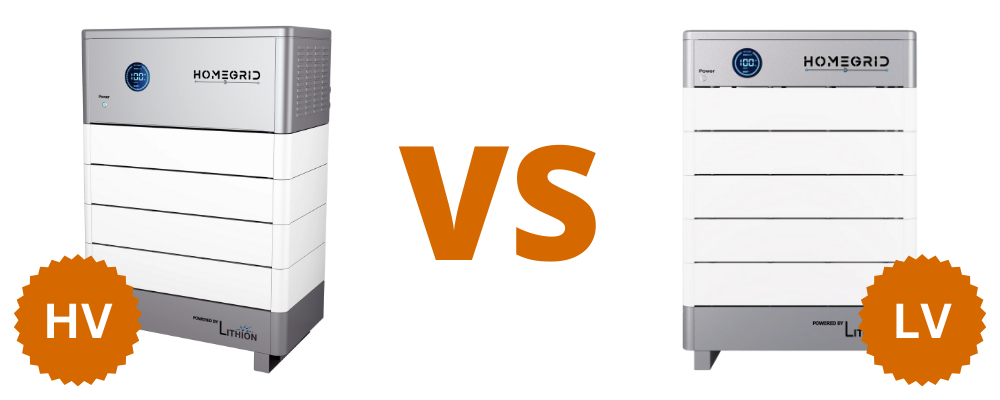
High Voltage vs Low Voltage Batteries
Share
Battery systems are a great compliment for a solar pv system. They allow energy to be stored for use when the sun is not shining. But which type of battery system is best? This is not something that has a one size fits all answer. There are multiple categories that batteries can fall into.
Today we are going to look at the difference between high and low voltage batteries. There are different applications for each of these systems and they both have very apparent strengths and weaknesses.
Low Voltage Batteries
Low voltage battery banks typically are keeping their voltage below 100V. Multiple battery modules are linked together in parallel (if the rated voltage is compatible with the inverter) or series (to increase the voltage).
For example: Two 24V batteries in series would result in a battery system voltage of 48V. Low voltage systems have higher amperage than high voltage battery systems.
This means that the conductors connecting your batteries to the inverter must be larger (thicker). These systems tend to be a little safer to work with due to the lower voltage and are much easier to scale. Typical battery inverters that are rated at 48V tend to handle large battery banks as well.
These low voltage systems tend to have trouble covering those quick, startup loads. A lot of the time, the battery system will need assistance from the grid or solar to supply enough instant power to the device that is trying to start (for example, a well pump). This is one of the major drawbacks to low voltage battery systems and is constantly being designed around. Low voltage systems are much easier to install and upgrade. They tend to have smaller physical individual units to allow for custom sizing.
High Voltage Batteries
High voltage battery systems are usually rated around 400V. These systems are able to charge and discharge faster than the low voltage batteries and can cover those quick demand surges from starting equipment. These batteries do not need large conductors because their voltage is so high.
The amperage running to the inverter from the battery is significantly lower than the low voltage battery systems. The battery inverters associated with high voltage batteries tend to allow for connections of around 3 batteries. This is significantly lower than the low voltage battery systems, however, the individual battery banks are larger for the high voltage systems.
High voltage systems are better for peak shaving applications where the battery is utilized every day. Installations with exceptionally large demands should utilize high voltage systems as well. Low voltage systems are better for off grid applications and people who are looking for large battery banks with medium to low demand. Low voltage systems take up more space and can have many more connections compared to a high voltage system. This leads to more “moving parts” and can result in more difficult troubleshooting items.
Conclusion
At the end of the day, high and low battery systems save energy and can be beneficial to unique energy solutions. If you have any additional questions or would like to talk to a Sales Engineer about different battery systems, please reach out to our team at info@renvu.com.
